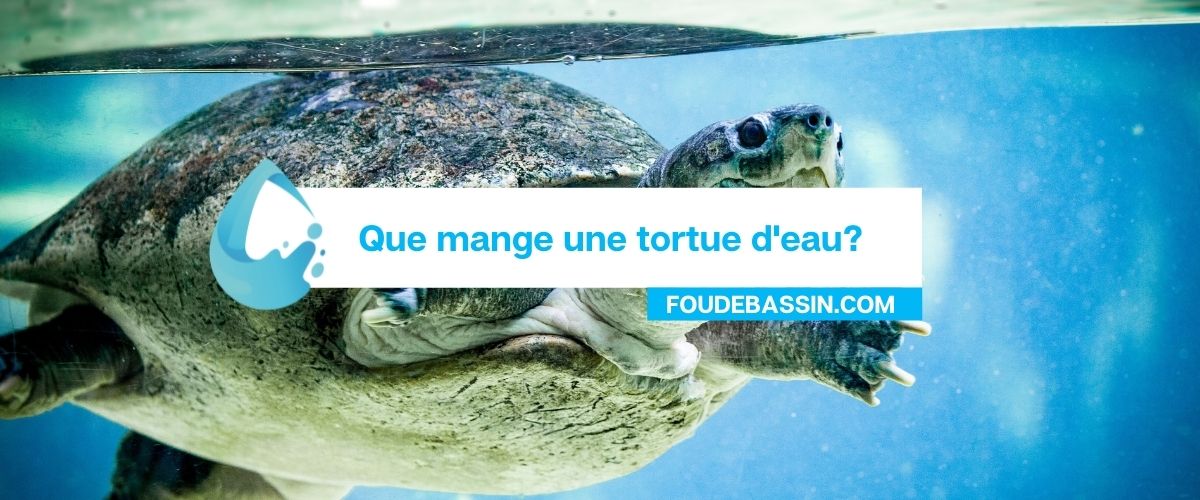Retrouvez ici les indispensables et meilleures ventes pour nos propriétaires de bassin.
Retrouvez ici les indispensables et meilleures ventes pour nos propriétaires de bassin.

They are increasingly present in homes. Their small size, their limited growth, the little maintenance they require make them the ideal pet for children whose parents are otherwise busy.
However, this species, also known as the marsh turtle, may have difficulty acclimatizing properly in captivity. If you notice that your favorite turtle is eating from the tip of its beak, you will have to bring it food that will suit it. So what does this type of reptile eat? How often and under what conditions? Let's swim in open water to discover the diet of this small animal that is both fragile and well-shelled.
Who are they and what is their diet?
You are no doubt fascinated by the diversity of species of water turtles. Added to this is a different mode of feeding depending on whether they are carnivorous, frugivorous or omnivorous. Their provenance is also varied.
The most common in pet stores are turtles imported from many countries such as North America or Central America, China, Laos or Vietnam or even African countries. You should know that the European pond turtle or swamp turtle is protected and cannot be bred in captivity.
He stays :
• The striped-necked turtle: with its orange stripes, it comes from Asia and is beautiful in appearance. Its longevity is around 15 years with an omnivorous diet, which represents an advantage for a water turtle that is very easy to adopt as a pet. It can reach up to 15 cm.;
• The alligator turtle: originally from North America, it owes its name to a horny appendage on the tongue. It can live up to 50 years and reach 100 kilos on a carnivorous diet. She would also be rather aggressive because she is obviously a hunter;
• The musk turtle: geographically close to the alligator turtle, it is however much easier to raise. Also a carnivore, it has a life expectancy of about 30 years and an adult size of approximately 15 cm. With its yellow stripes, it is not lacking in charm but watch out for odors because it has a deterrent weapon; a gland secreting a pestilential substance;
• The rhinoclemmyde or painted turtle: native to Central America, it is semi-aquatic and frugivorous. She too is rather easy to breed and can therefore be suitable for her debut with this species;
• The African pelomedusa turtle: characteristic with its flat shell, green verging on brown and its non-webbed feet, it can live up to 30 years. If she is also a carnivore, she has a rather accommodating character.
Be very careful all the same when you decide to adopt this little animal.
As you have noticed, some of them can reach quite large sizes or turn out to be aggressive. In addition, you should always require a certificate to ensure that the turtle has not entered the territory illegally. Its traffic is very active and seizures from various continents are counted regularly.
What is its way of eating?
As it is an aquatic turtle, it is obvious that it eats in its environment. This is what will seem quite difficult to implement if you have not set up a dedicated space for your animal. This must be dug to create a pond with outcropping stones. It is on these improvised promontories that you will be able to deposit food for your small animal.
The turtle will soon spot these offerings and will then climb onto the rock or simply peck at the food. In a pond, the marsh turtle drags its food to the bottom. Your turtle may possibly and depending on its diet, capture insects but also many animals present in the pond or nearby such as worms, snails or even small fish. If you have an aquarium, you will need to ensure regular maintenance with an effective filtration system.
You can also slip in a cuttlebone to improve its calcium intake. Make sure to always present raw foods and avoid pellets that are not made from natural ingredients. Finally, depending on their diet, the nutrients necessary for its growth will vary.
Some species are quite carnivorous as juveniles and become omnivorous during their evolution. In all cases, it is important to carefully observe a ratio between protein and lipid and carbohydrate intake. Thus, the following percentages can be established:
Be aware that some foods are much more nutritious than others, such as green cabbage leaves or even turnips, which are very good for your water turtle.
A tip to keep your turtle healthy:
It is very important to observe one day of fasting per week for a juvenile turtle and two days for an adult turtle! Even if your water turtle is still a baby, you must observe this regularity. Pick a day of the week as its lean day and your turtle will continue to swim with strength and vitality.
Aquipond Greenstab - Natural treatment against pond algae It is a natural product that helps limit algae at any time. It also has a prevent...
View full detailsReduces the layer of silt in the pond by at least 40% Easy to use with less impact on biodiversity Prevents fermentation, bad odors. pH ...
View full detailsOrganic dye to block plant growth by limiting photosynthesis ORGANIC PRODUCT NON TOXIC TO HUMANS (DIVING) AND FISH. 100% NATURAL AND BIODE...
View full detailsThe positive effects of barley straw have been known to water enthusiasts for a long time. But currently barley straw is difficult to find and i...
View full detailsReduces at least 40% of the layer of silt in the pond Easy to use with less impact on biodiversity Prevents fermentation, bad odors. ...
View full details